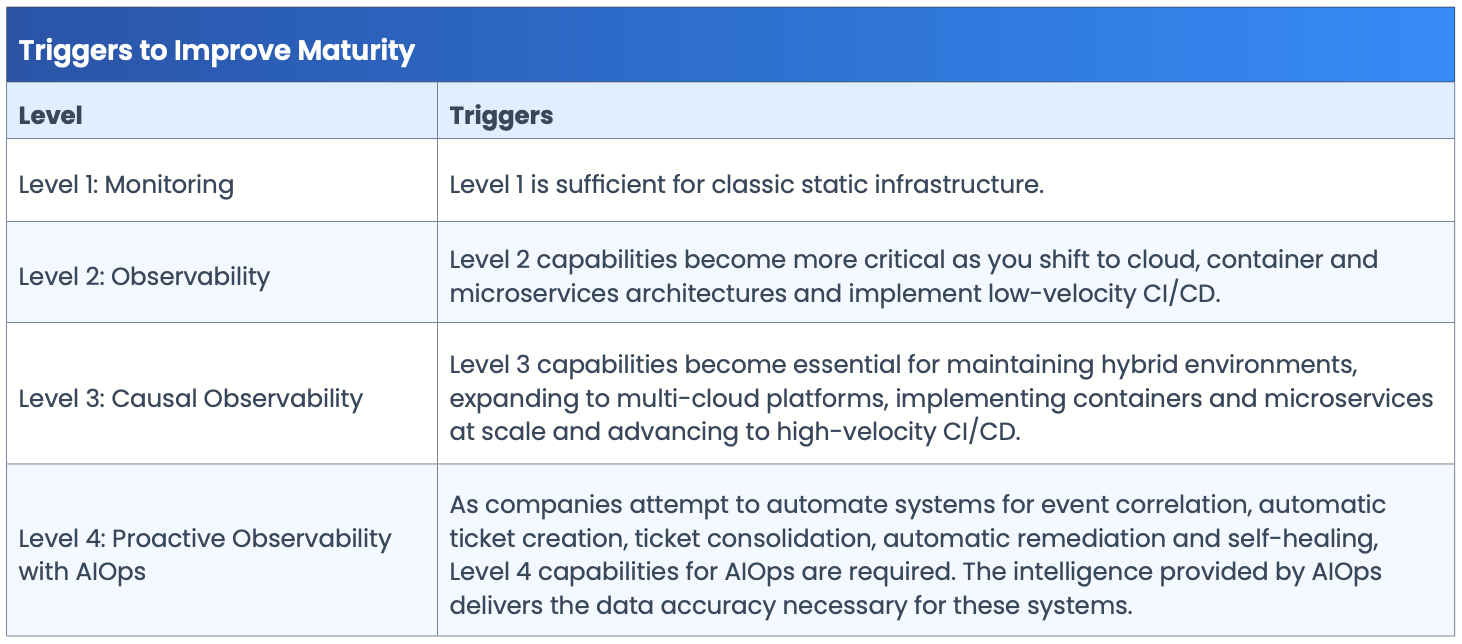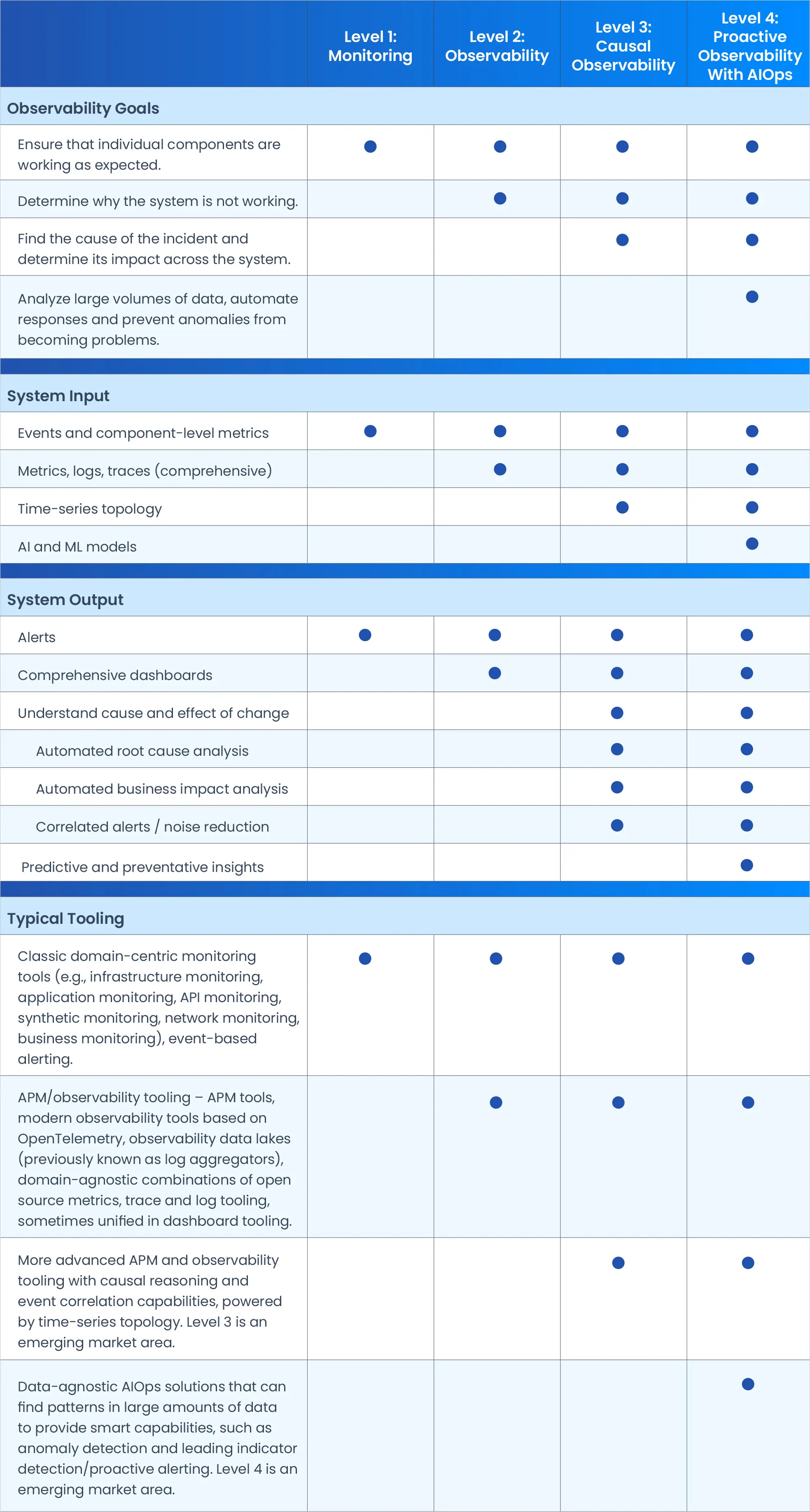Observability Maturity Model Fundamentals series, Part 6
This series of 6 blogs outlines the basics of the Observability Maturity Model. Use it to identify where you are on the observability path, understand the road ahead and provide guidance to help you find your way.
Go back to: Part 1 | Part 2 | Part 3 | Part 4 / Part 5
For decades, IT operations teams have relied on monitoring for insight into the availability and performance of their systems. But the shift to more advanced IT technologies and practices is driving the need for more than monitoring – and so observability evolved. With infrastructures and applications that span multiple dynamic, distributed and modular IT environments, organizations need a deeper, more precise understanding of everything that happens within these systems. Observability provides that comprehensive insight, delivering clear capabilities at each level of maturity.

Each level of observability is characterized by distinct goals, inputs, outputs and capabilities. You’ll also find commonalities in typical tooling at each level.

The higher your maturity level, the more resilient and reliable your IT systems will be. You’ll be able to troubleshoot the root cause of problems more quickly, understand business impact of changes and failures and ultimately deliver a better experience for customers.
How StackState Can Help You
StackState delivers a new and essential capability for managing today’s complex hybrid, cloud and container environments. Our unique approach, which we call topology-powered observability, captures the complete topology of your stack and correlates this data with telemetry and trace information at every moment in time. Only StackState has versioned graph database technology that can store every topology change in your stack at scale, enabling you to track dynamic relationships that help identify root cause. This foundation provides a complete picture of the state of your stack and lets you apply the intelligence you need to quickly find, fix and prevent problems. Reach out to us and we’d be happy to show you.



